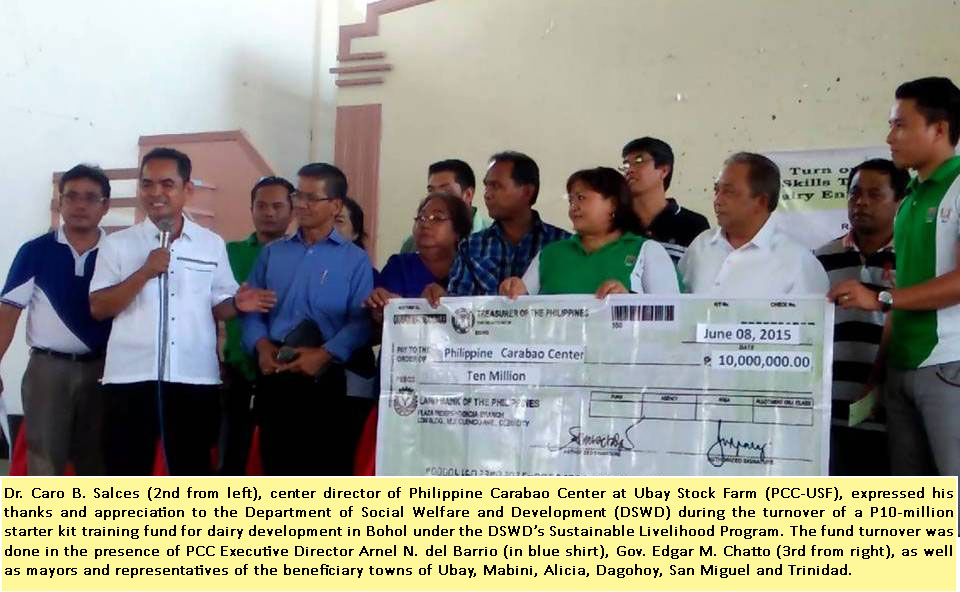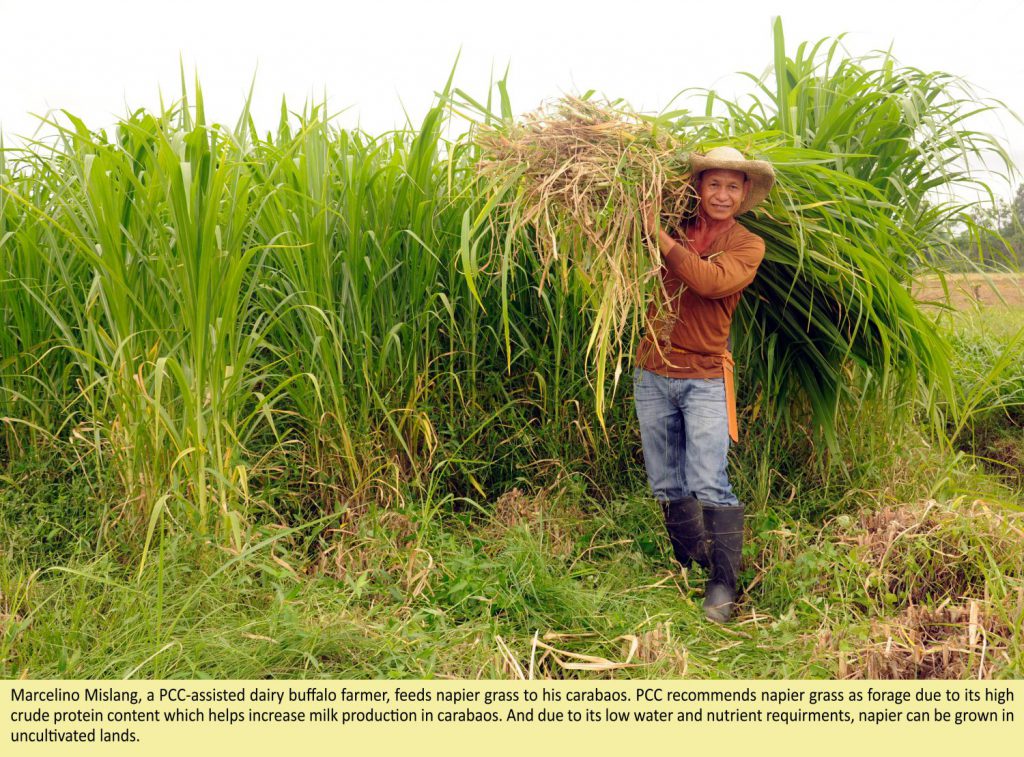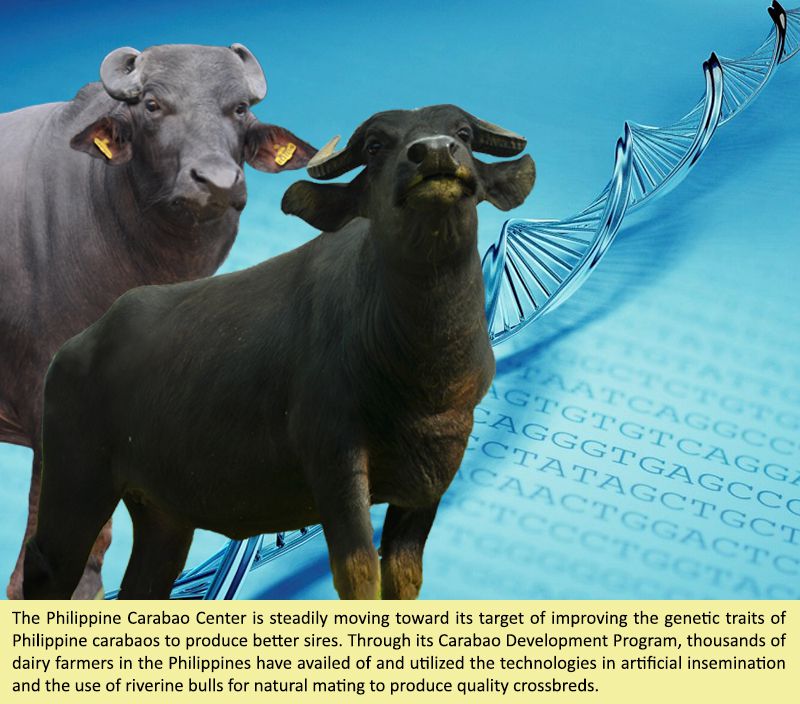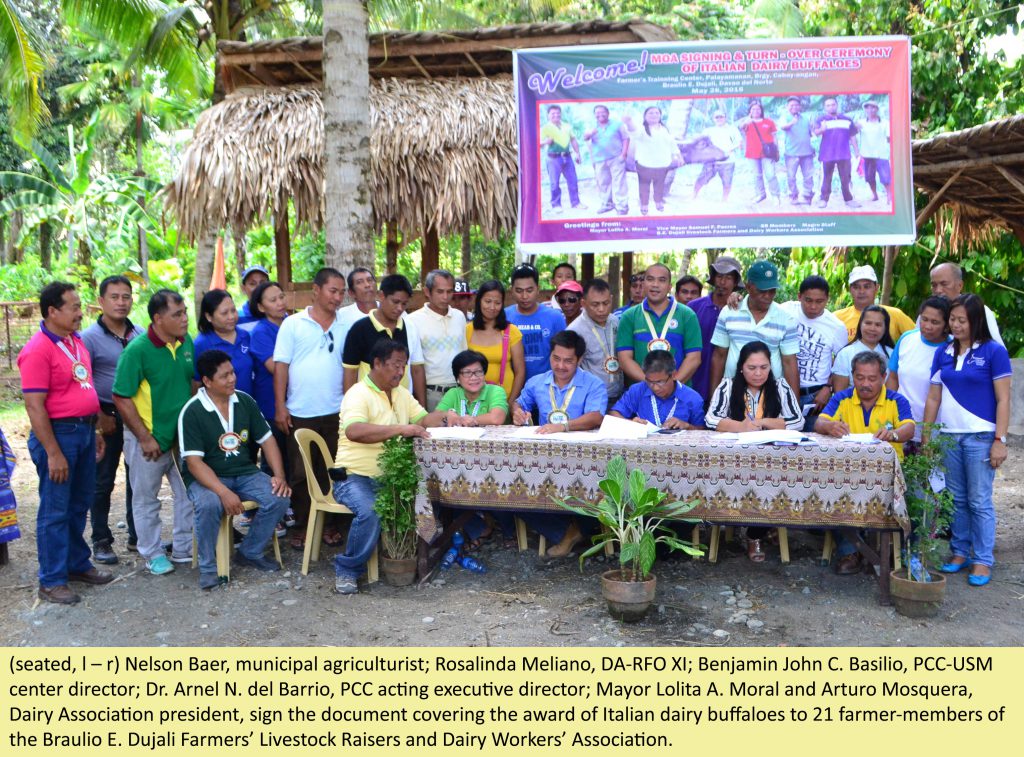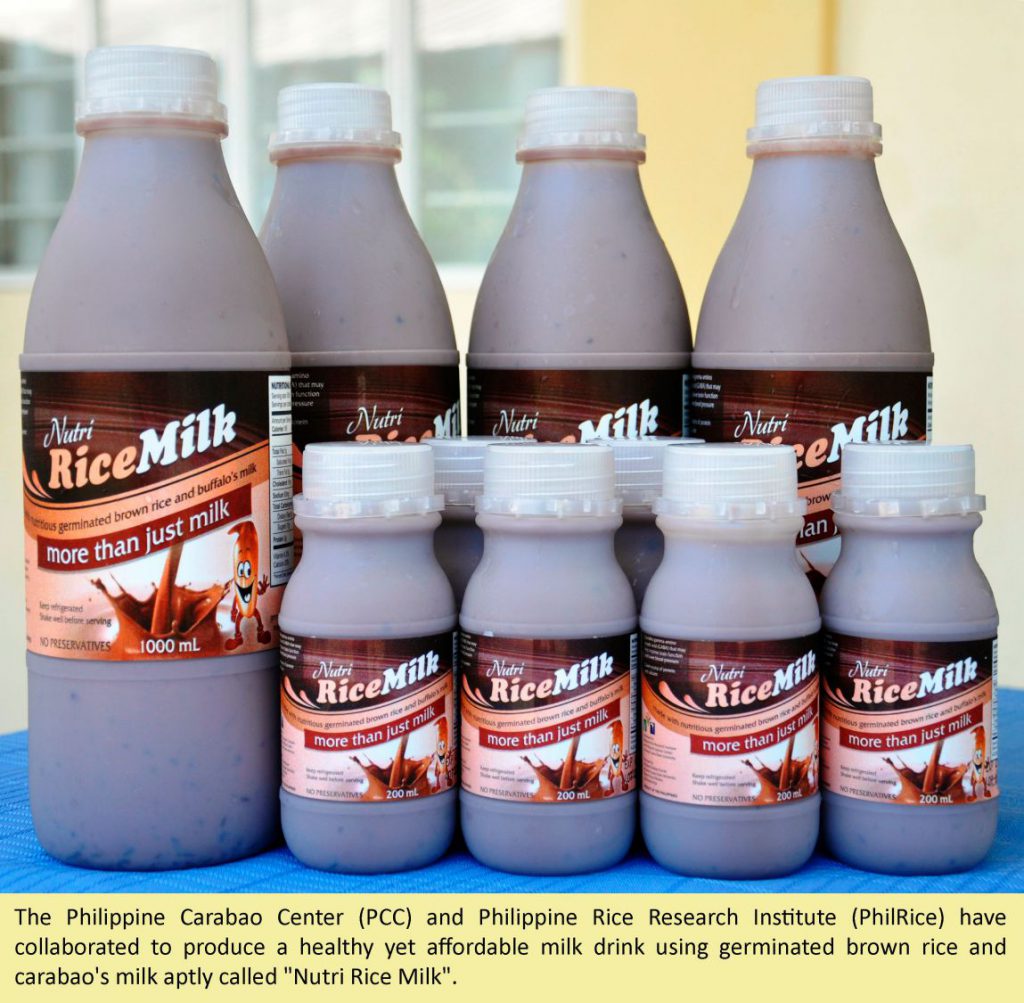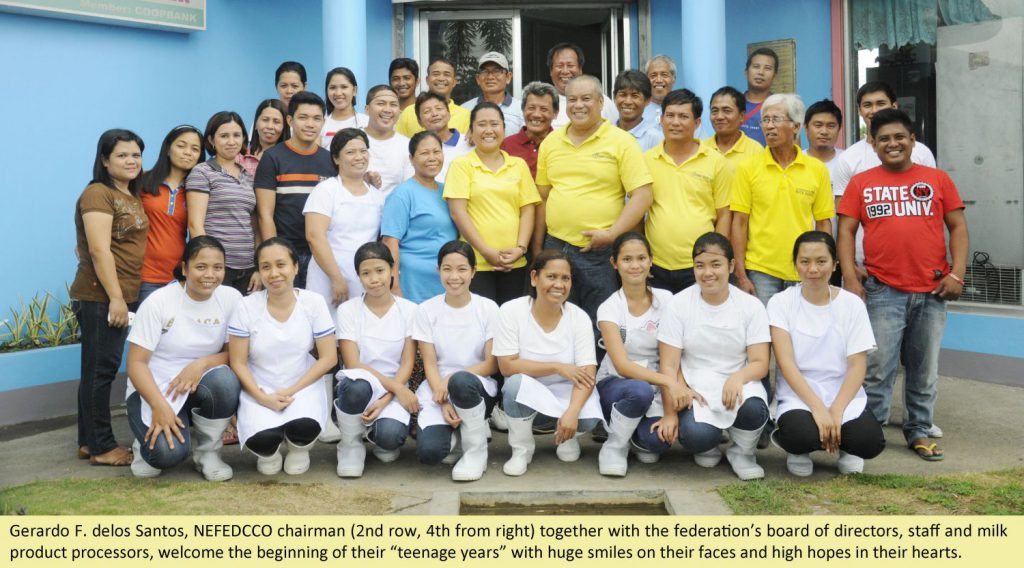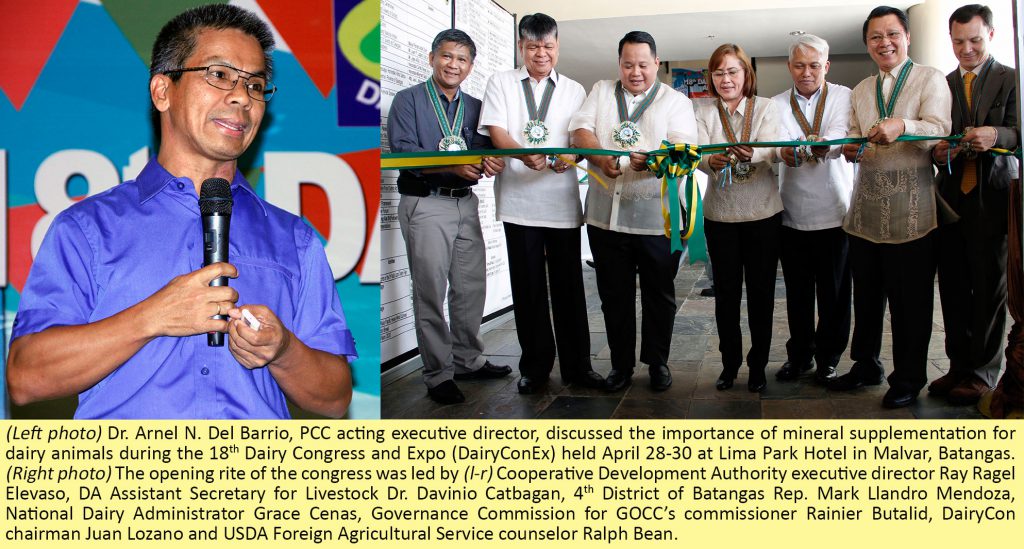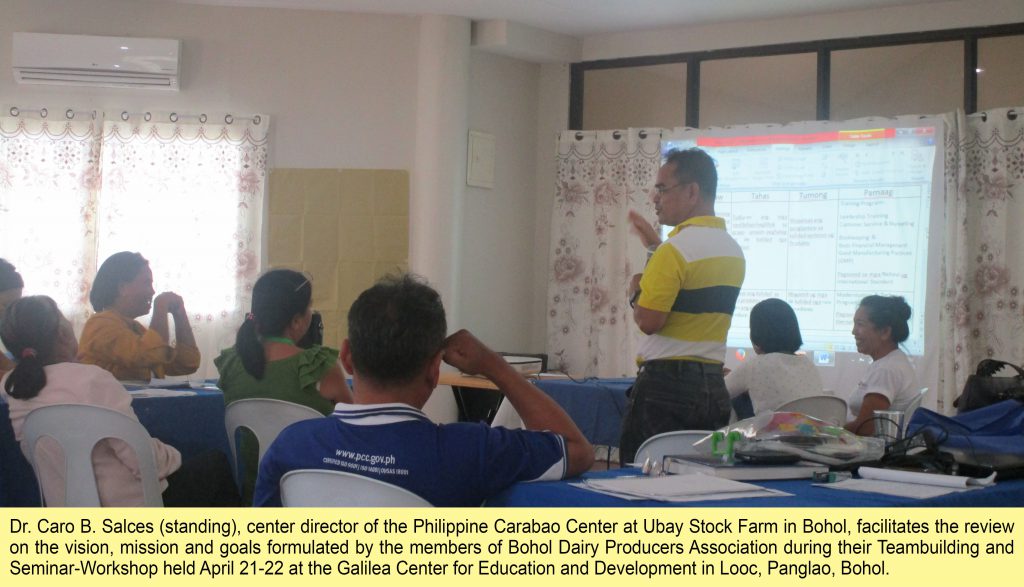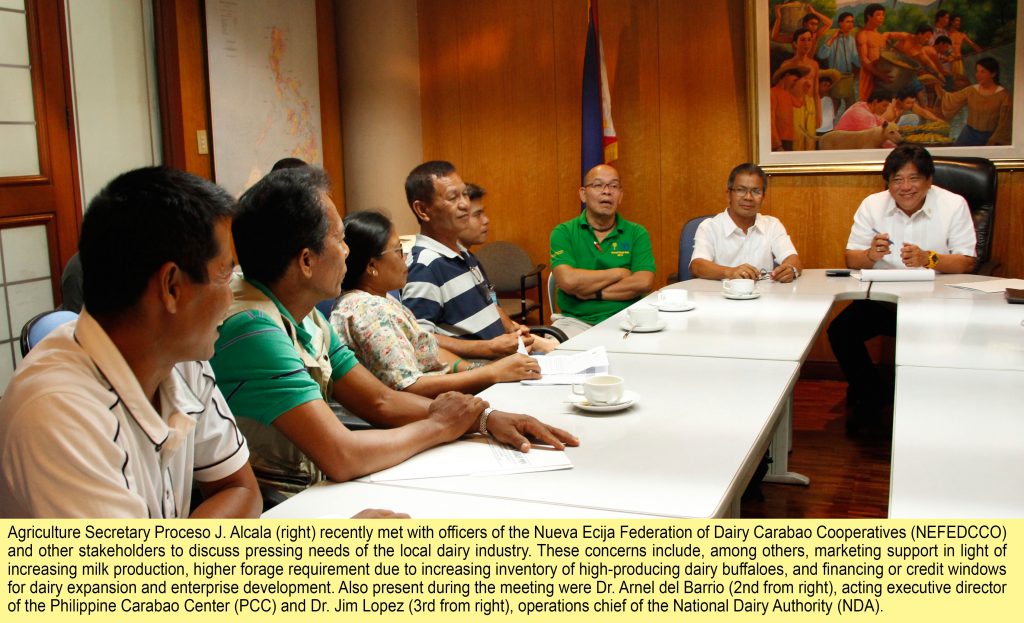Product developers, including those in the dairy industry, are aware that consumers nowadays are always looking for something new in the market. Thus, they become more explorative, striving to try something new, never settling on just one variant.
Product development means not only creating new products but also improving the quality of the existing ones.
In this regard, the Philippine Carabao Center (PCC) develops the technologies and promotes the products to show dairy farmers that there is really money out of milk and more profit if they process it into different milk products. Using available technologies, the more creative and enterprising ones improvise.
Producers of dairy items, such as those at the product outlets of the PCC at Central Luzon State University (PCC at CLSU) and PCC at University of Los Baños (PCC at UPLB), the PCC Milka Krem central milk processing plant, and some other private entrepreneurs, take into consideration different factors in developing products.
The PCC at CLSU experience
A former consultant-chef of PCC at CLSU who used to be a distributor of products from PCC suggested that the center to consider making dairy products that are commercially available in Manila but were actually imported from other countries.
“She asked us to develop products similar to the products sold in Manila that are made out of carabao’s milk. We asked a sample and did experiments and trials on how to develop them. We requested her to do the sensory evaluation since she knew the quality of the products and the high-end market. We tried to revisit our trials and did some modifications. It was a series of 5-6 trials for the table-type mozzarella, bocconcini, greek-style yogurt or plain yogurt, ricotta cheese that we tried to develop,” Mina Abella, officer in charge of PCC at CLSU products outlet, said.
Abella added: “We came up with products that are acceptable to her and to the market or the market-driven products. In terms of pricing, we made our price relatively cheaper than the existing commercial ones.”
Eventually, PCC at CLSU also came out with different flavors of pastillas (milk candy) with different flavors lacing these with malunggay (Moringa oleifera), tanglad (lemongrass) and herbs for their beneficial effects on health.
“Nutri Rice” milk and other saleable dairy products
In developing the products, the PCC at CLSU considers suggestions from the staff and researchers plus the resources, processes, protocols and qualities of the products. Customers’ satisfaction survey results, customers’ suggestions and product positioning in the market are likewise utilized as decision-making inputs.
The PCC at CLSU facility processed an average of 60-70 liters of milk a day in the last quarter of 2014. In the previous quarters, it used to process an average of 100 liters of milk daily.
The products developed from the available volume of milk were mozzarella cheese, ricotta cheese, bocconcini, quark cheese, seven different flavors of yogurt milk, iced-yogurt, a yogurt packed in an iced-candy sachet which was developed in summer of 2013; coffee milk, a milk-based coffee with a very affordable price; yogurt with jelly on top, milkaroons and rice milk.
The production of rice milk was initially a project by Philippine Rice Research Institute (PhilRice), until a staff from PCC suggested that carabao’s milk be used to blend it as “Nutri Rice” milk. The PCC and PhilRice then collaborated to come up with a formulation that utilizes germinated brown rice and carabao’s milk.
PhilRice, at first, used either powdered milk or cow’s milk until it finally settled on the use of carabao’s milk as ingredient. Brown rice, an expert said, is already healthy, but germinating it and adding carabao’s milk makes for an even a healthier drink.
“The experiment on the use of the germinated brown rice (GBR) started in the third quarter of 2014 and was soon perfected with use of the carabao’s milk. PhilRice provides us the GBR and we’re processing it into nutririce milk. The product is now sold in their cafeteria, in our outlet, and other places, and being served in seminars,” Abella said.
As for developing the iced-yogurt, Abella pointed out: “There are students who want yogurt but couldn’t afford the price. That’s the time we thought of developing an iced-yogurt with a very affordable price and it became very saleable. Actually, it is an iced-candy with a twist.”
Developing a product also takes into consideration the product’s shelf life. Thus, producers make interventions on how to prolong its shelf-life and improve its quality.
The PCC at CLSU processing facility also considered room temperature in the incubation of yogurt to cater to the needs of small-hold farmers in creating their own products.
“If you don’t have high-end processing facility, it doesn’t mean that you can no longer develop products. Just explore using whatever resources you have,” Abella advised.
“Product development is important. You should always be ahead of your competitor. Don’t just settle for the products you have, develop something new or else you’ll be left behind by your competitor. In the market, what comes first, gets the best,” she added.
Putting whey to good use
Currently, the PCC at CLSU processing facility focuses on the utilization of whey products. It is a by-product of cheese-making in which about 50-60% of the milk’s volume goes to whey, a nutritious liquid, that can be developed into more valuable products like whey beverages, whey yogurt and whey vinegar.
Ricotta cheese is one example of a whey product.
The development of whey vinegar and whey sports drink has been the subject of the theses of CLSU food technology students. The experiment for whey vinegar started in January 2015 while that focusing on whey sports drink is currently in progress. If the research proposal for the whey sports drink is approved, then the PCC will provide the budget for the study, which will be conducted for one semester. It includes profitability analysis, sensory evaluation and consumer’s acceptability.
Usually new product development is done in comparison with the sensory qualities of those already available commercially.
“Whey is a very good beverage for athletes and for those who exercise in the gym because it contains a certain amino acid that is good in developing muscle tissues. Until now, many people don’t realize the nutritional value of whey products. That’s why we are developing them to be acceptable to the children,” Abella stated.
The CLSU dairy products outlet also considers the unavailability of some products developed and sold at the PCC-managed Milka Krem. They include products like milkaroons, ricotta cheese, coffee milk and others.
“We also plan to develop products that contain less sugar for the diabetics, like the pastillas (milk candy). We also plan to produce non-food products like soap, lotion and shampoo using the carabao’s milk as ingredient someday,” Abella said.
Central Milk Processing Plant (CMPP) strategy
In the Milka Krem CMPP, product development depends on customers’ satisfaction surveys. From the results therein, there were able to determine what the general public wants to be developed for the market.
“We conduct the survey, research about the product suggested in survey results, make formulation trials, do a lot of treatments for comparison, sensory evaluation and analysis of the results. From the results, we know which one to develop,” Patrizia Saturno, CMPP manager, explained.
For Saturno, their biggest challenge lies in the different preferences of consumers when it comes to the products. Therefore, they consider the product that garnered the most number of preferences in surveys and sales in the selection in the product to be developed commercially.
Private entrepreneur’s innovative ideas
The innovative ideas and persistent determination for a high quality product of Ariel ‘Aying’ Viñas, a private entrepreneur in Cabiao Nueva Ecija, have resulted in the steady stream of customers who made the entrepreneur’s business boom.
The creation of entrepreneur Viñas, the Aying’s Homemade Pastillas, has become a much-sought commodity for many customers from different places. They like very much the firm’s famous creamy pastillas products that are packed in colorful wrappers.
Aying’s first three flavored pastillas were pastillas de leche, ube and yema. It eventually expanded to eight distinct flavors.
“Each time I see food products when I go out with my family, I always think of how I can incorporate those items with our pastillas. I conduct experiments until I develop a new recipe for the product,” he revealed.
He developed his own version of frappé, a variation of the ever-popular Filipino dessert, Halo-halo, with pastillas as additional ingredient, and lumpia (spring rolls) wrapped in fried pastillas. He will soon offer dessert pizza filled with pastillas and currently exploring the possibility of baking bread with pastillas as filling.
Aying recognizes the stiff competition among the established and new pastillas-makers. But he said the solution for survival in the business is always to be creative in creating new products that will be different and saleable.
The PCC at UPLB experience
As with PCC at CLSU, all the products of PCC at University of Los Baños also pass through the sensory evaluation of its panel, which includes consumers. It uses a sensory evaluation form to get the consumer feedback.
“Before we develop and launch a product, it has to pass through a panel. It is our standard procedure in developing products to consider those that will have higher demand from the consumers,”
Dr. Rosalina Lapitan, officer in charge of PCC at UPLB, said.
After a series of sensory evaluation, she said, the producers invite the staff members of the center and animal scientists from the dairy sciences cluster of UPLB for the products’ taste-test.
Then the developed products are brought to the center’s assisted-dairy cooperatives for commercial production. It is up to the coops to make some adjustments and modifications to meet their consumers’ preferences. The center makes visits to see the progress of the co-ops’ endeavors in production and marketing.
They also conduct an end-product quality testing for each dairy co-op they assisted. All of their products should have its standard ingredients.
“Milk is very perishable and as such it cannot be stored for long. It needs to be processed immediately and at the same time all of its ingredients should be ready. There is much spoilage when we run out of ingredients and stock. Among the challenges we met are the scarcity of resources and the availability of ripening room for the development of different variants of cheese,” Dr. Lapitan explained.
PCC at UPLB conducts one-week training on milk processing and mozzarella cheese-making. The training also includes good manufacturing processes.
“We market our products by promoting and having a free tasting. After the taste-test, we give them the sensory evaluation form for their comments and feedbacks,” Dr. Lapitan said.
Carabeef sausages
PCC at UPLB is the only regional center in the PCC network that initiates the processing of meat products. In 2007, it started to offer carabeef sausages.
“We had a consultant back then whom we asked on what we can do with the carabao’s meat. He suggested products that will use carabeef as the base meat. We developed sausages for processing,” Dr. Lapitan said.
Labeled as “Carabest Premium Carabeef Sausages,” they are processed by the Animal Products Development Center (APDC) of the Bureau of Animal Industry in Marulas, Valenzuela City, which was commissioned by PCC at UPLB for the purpose.
The meat used for processing variants of “Carabest” premium gourmet sausages is derived from culled animals from the PCC at UPLB institutional herd. These are animals that are either no longer productive or are male crossbreds.
However, due to the limited supply of carabao’s meat, PCC at UPLB couldn’t sustain frequent processing of such meat products.
“Even if we want to satisfy the growing demand from our customers, we don’t want to sacrifice the quality of the meat that we process by outsourcing it from other suppliers,” Dr. Lapitan said. “We will soon solve this problem,” she added.
As can be deduced, based on the experiences of the producers, they don’t come up with just one product and say that it is enough. They do continuous improvement and make use of innovative ideas. Thinking out-of-the-box is what makes them come up with various items, especially products “with a twist” that really sell.

